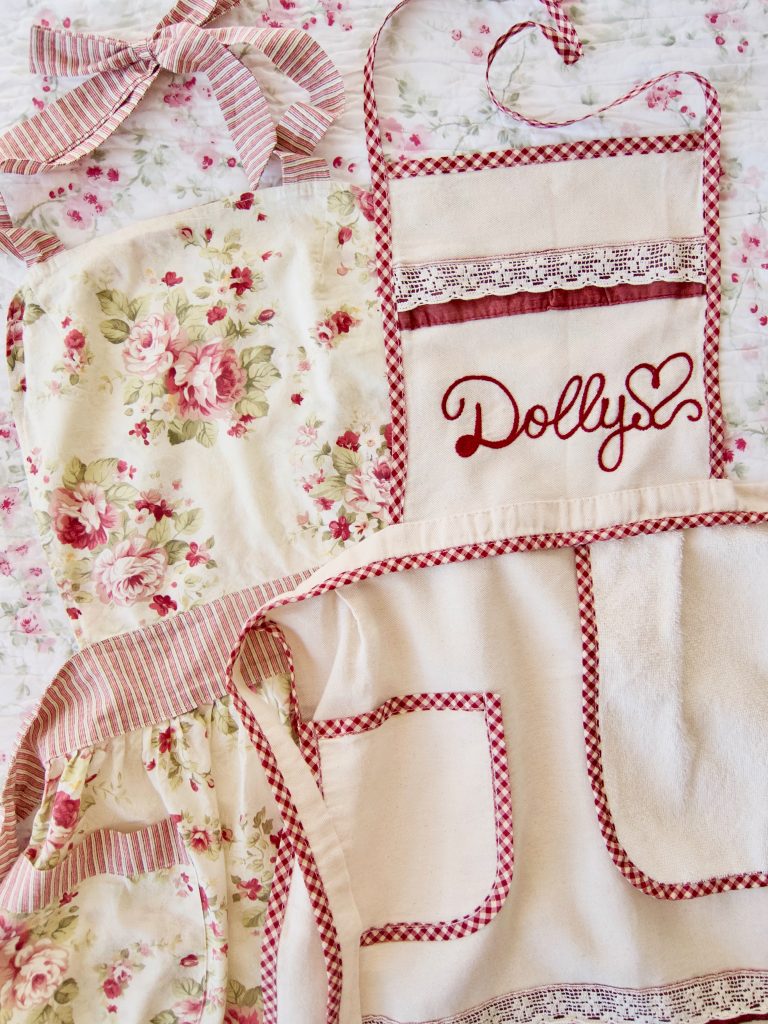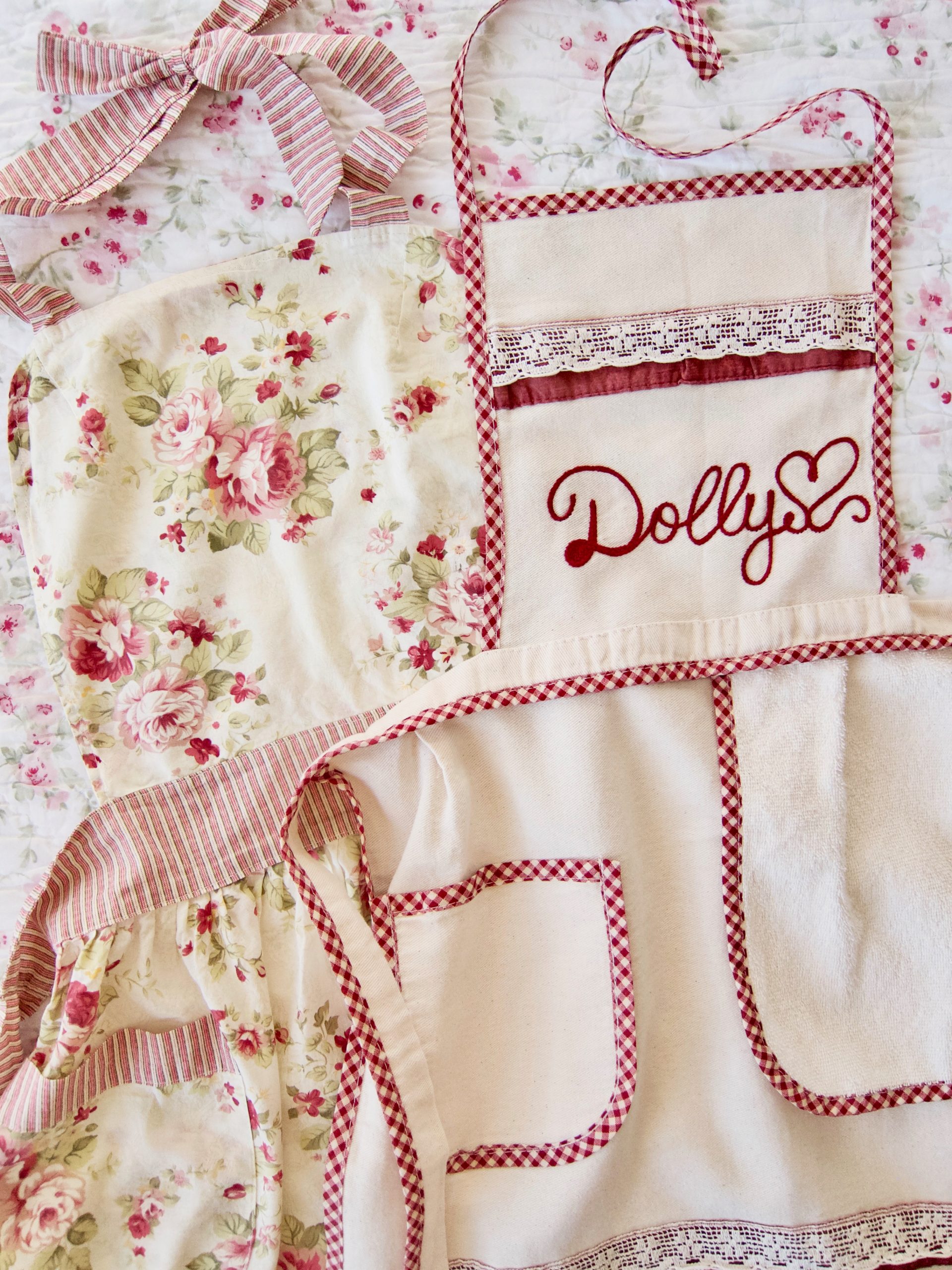Grandmother’s Apron

I don’t think our children understand what an apron is. The principal use of the cotton pinafore was to protect the dress underneath because a woman often had very few. It was also easier to launder aprons than dresses.
An apron served as a potholder for removing hot pans from the oven. It was wonderful for blotting children’s tears. From the chicken coop, an apron was a pouch for carrying eggs, fussy chicks and sometimes half-hatched eggs headed to a warming oven.
When company came, those aprons were ideal hiding places for shy kids. When the weather turned cold, Grandmother would wrap it around her chilled arms. Those big old aprons mopped many a perspiring brow, whether bent over a hot wood stove or picking snap peas in the garden. Her apron served as a carrier for kindling and wood chips brought into the kitchen to stoke the fire. From the garden, it carried the fresh vegetables. After the peas had been shelled, it carried out the hulls.
Come Autumn, the apron bundled the apples indoors for preparing apple butter and pies. Then unexpected company drove up the road, it was surprising how much furniture that old apron could dust in a matter of seconds. Toys and shoes where toted to bedrooms in it as well.
When dinner was ready, Grandmother walked out onto the porch and waved her apron as an alert to the menfolk to come in from the fields for her buttery biscuits.
Times have changed. While Grandmother once set her hot baked pies in the window sill to cool, her granddaughters set their’s out to thaw. There are many cooks today that would fret over the stains and germs on Grandmother’s apron… but it is doubtful that anyone caught anything from her apron but love.
This poem Grandmother’s Apron is often listed as “Author Unknown” but the original version was written by Tina Trivett.

